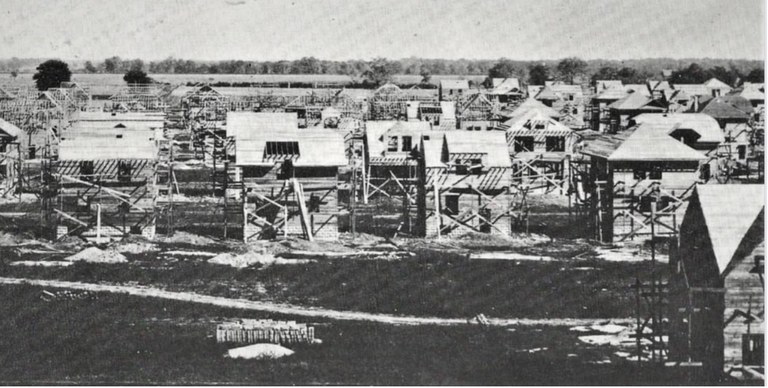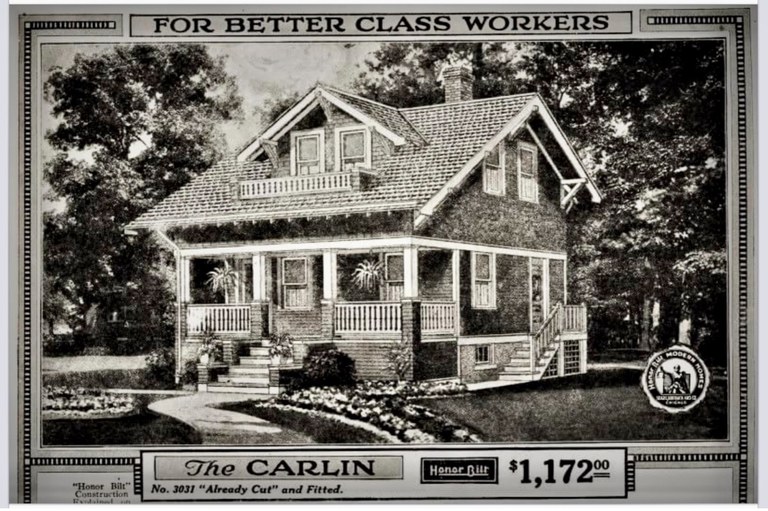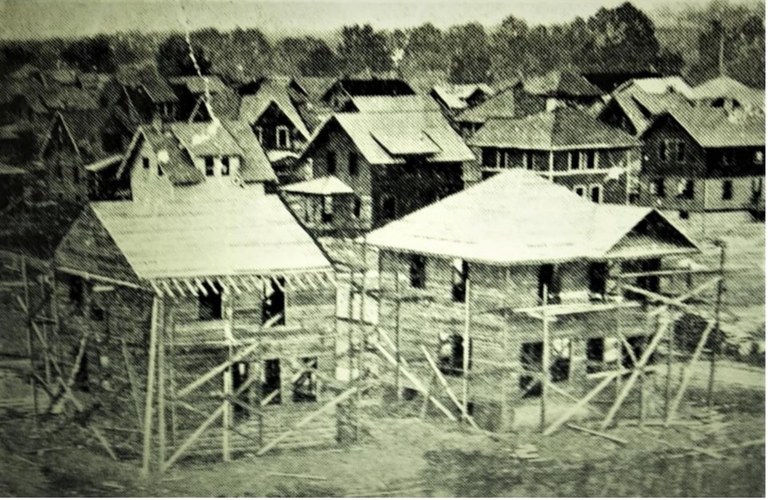Standard Addition Sears Homes Neighborhood
Standard Addition Sears Homes (Boundaries: Whitley Street to the North, Burton Street to the South, University Street to the East and High Street to the West)
In 1917, World War I caused a coal shortage and Standard Oil of Indiana needed a dependable supply of coal to power their oil refineries. They found it in Carlinville and opened two mines, one on the northeast edge of Carlinville and the other eight miles outside town. Hundreds of miners, along with their families, came to Carlinville to work in the new mines. The town’s population grew by a third, almost overnight, causing a housing crisis. To solve the problem, Standard Oil turned to an unusual source for quick, permanent housing – the Sears and Roebuck catalog.

Construction of Sears Kit Homes purchased from the Sears & Roebuck catalogue circa 1918
From 1908 to 1940, Sears and Roebuck Company offered 450 different models of ready-to-assemble kit homes. The average kit home had 30,000 parts – nails and screws included. All lumber was precut, no sawing required and all parts were numbered and keyed to a blueprint. Nine different models in the “Modest” variety – 5 or 6 rooms on two floors – were selected for Carlinville, ranging in price from $3,000 to $4,000. Standard Oil placed an order for 156 of these mail-order homes. Because of the size of Standard Oil’s order, Sears and Roebuck Company named one of their models the “Carlin” after the city of Carlinville.

Page our of Sears & Roebuck Catalogue advertising The Carlin model of their kit homes. This model was names for the city of Carlinville because of the size of the Standard Oil of Indiana’s order.
Within one year, all 156 Sears houses had been erected and an entire new neighborhood – Standard Addition was added to Carlinville. Thus becoming the largest concentrated collection of Sears catalog homes in the world. Today, 150 of the original homes still stand.
Standard Oil had promised Carlinville that its mines would be here for 50 years. By the mid-1920’s, however, Standard Oil could buy its coal from non-union Kentucky mines far cheaper that they could mine it here. In July 1925, Standard closed its mines for good. Miners and their families moved away in search of work. Houses in Standard Addition, still owned by Standard Oil, stood vacant for nearly a decade.
In 1935, Standard Oil decided to sell the homes at Depression-era prices. A 5-room house and lot went for $350 and a 6-room house and lot went for $500. Even in hard times, the houses sold fast.
For the next 50 years, the history of Standard Addition was largely overlooked. It was considered a neighborhood of low priced housing – starter homes for young families and rentals for students from nearby Blackburn College.
By the 1980’s, though, new appreciation of the old Sears Catalogue homes – their quality materials and construction by local craftsmen – was growing throughout the United States. In 1987, the first house tour of Standard Addition was held, drawing over 1500 people in a single day. Since then, the neighborhood has been the subject of sightseers, documentaries, and has attracted the attention of architects from around the globe.
At the present time, there is a group of volunteers trying to bring the historic neighborhood back to its previous glory.
NEXT: Granny Wilson’s Garden (Carlinville Plaza and Wilson Street)

